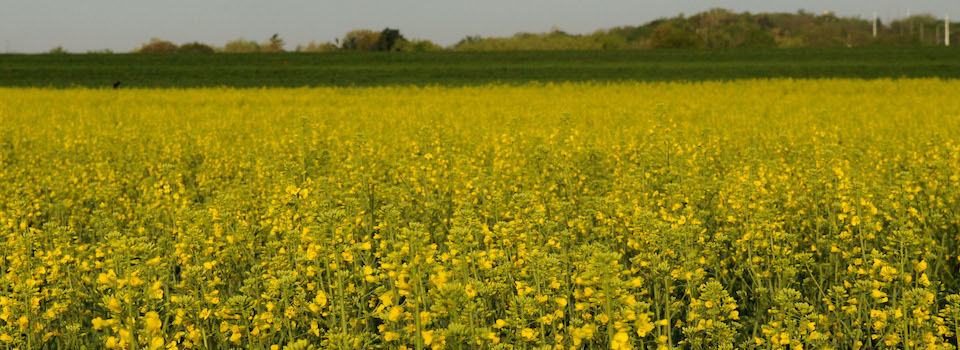K-State canola breeder reports a successful 2024 harvest despite adverse weather
Winter canola – a cool-season broadleaf crop used in cooking oils and renewable fuels – gets planted in Kansas every year around September and harvested in June.
Kansas State University canola breeder Mike Stamm announced the results of this year’s harvest recently on K-State’s Agriculture Today radio program, noting most producers seem pleased with the yields they received.
“It was a good year for more acres of winter canola returning to our region,” he said. “Similar to the 2024 winter wheat crop, we had some variability across the state, with two canola plots 45 minutes away from each other averaging 50 and 20 bushels per acre, respectively.”
Stamm said this volatility in yields stemmed from the irregular weather patterns that burdened Kansas crop production in 2024.
With early spring being dry for most Kansans, Stamm said the outlook for this year’s crop seemed bleak. Fortunately for some producers, multiple rain events in May provided needed relief.
“When moisture finally did come in late spring, it created a big impact on the crop this year,” he said. “That lack of rain in March and April ultimately did limit the yield potential of the crop overall, but those later rains and cool temperatures lent to some recovery.”
Besides the early spring drought, canola growers also faced unusually cold temperatures that negatively influenced crop development.
“We also had a cold spell at the end of March that greatly affected the crop – particularly near Hutchinson,” Stamm said. “I observed some pretty significant damage to early flowering materials.”
Even with all the unfavorable conditions, Stamm said winter canola yields were on par with fairer weathered years.
“The K-State canola trial site in Hutchinson recorded only 11 inches of total precipitation from Sept. 1, 2023, to harvest,” he said. “Still, some varieties yielded very well in the 40s and 50s bushel per acre range.”
“It is pretty amazing that the crop yielded like it did on that amount of rainfall. It all boils down to the timeliness of those spring rains.”
A non-weather-related factor that also contributed to the 2024 winter canola crop’s success included a change in harvest methods, according to Stamm.
“Rather than swathing and then picking up the windrows at harvest, there was quite a bit of producers direct cutting fields,” he said. “I think we will continue to see it become the primary method of canola harvesting in the future.”
For canola producers interested in more information about yields and harvest management, Stamm suggests attending the regional winter canola meetings hosted by K-State, Oklahoma State University and the Great Plains Canola Association on Aug. 6-7.
PHOTO: K-State canola breeder Mike Stamm says even with cold temperatures last winter, growers across the state did not experience much winterkill. (K-State Research and Extension news service)



